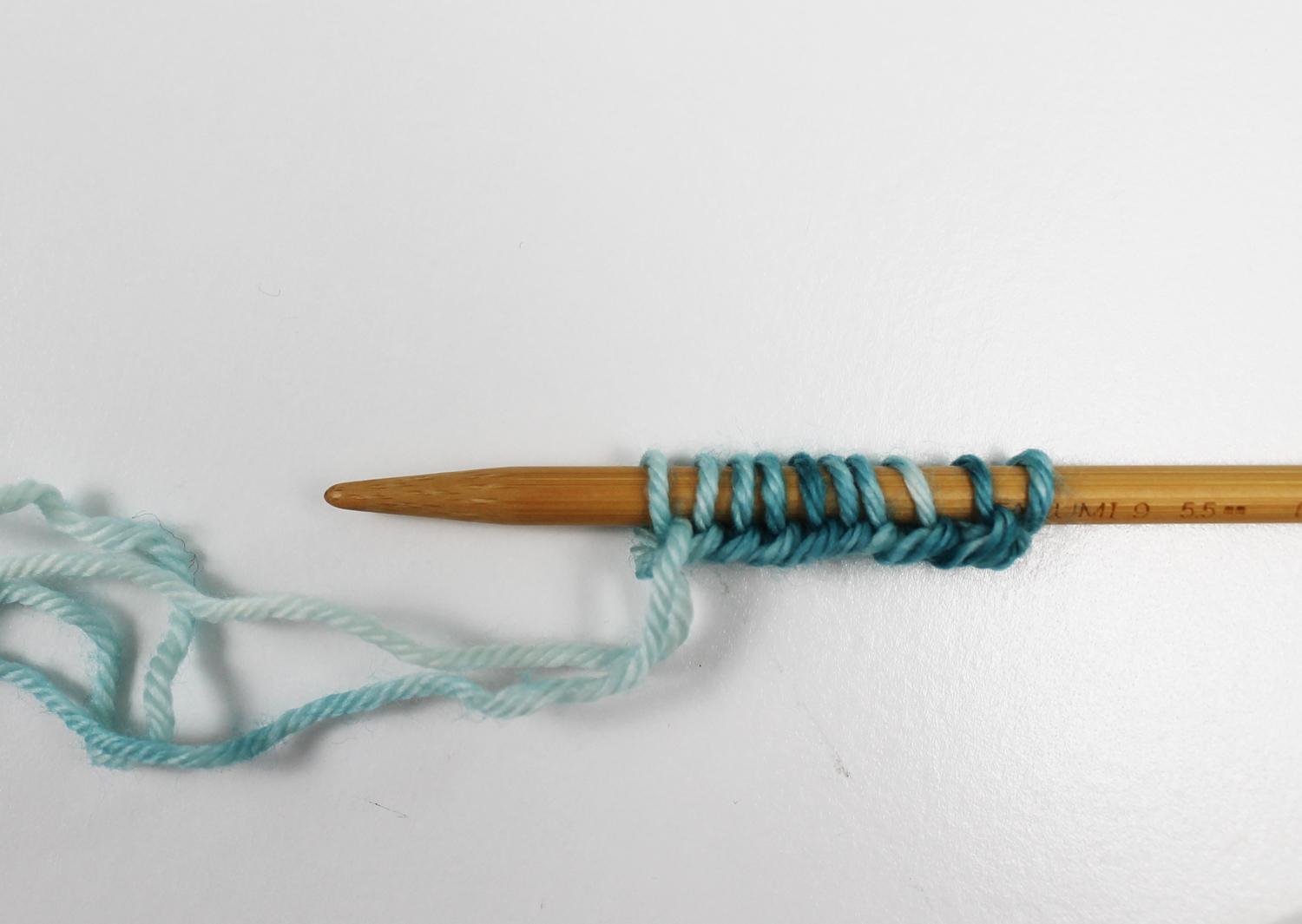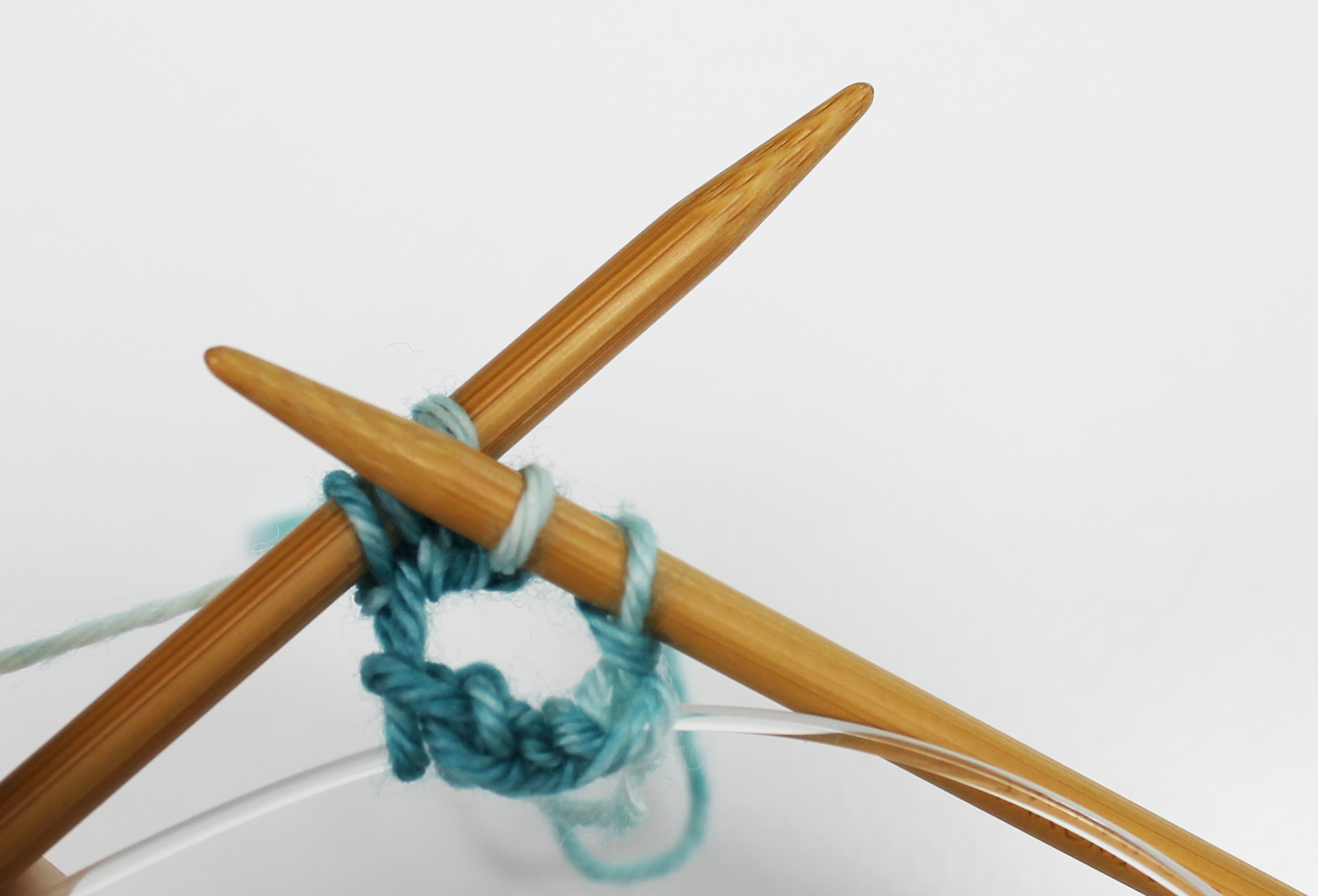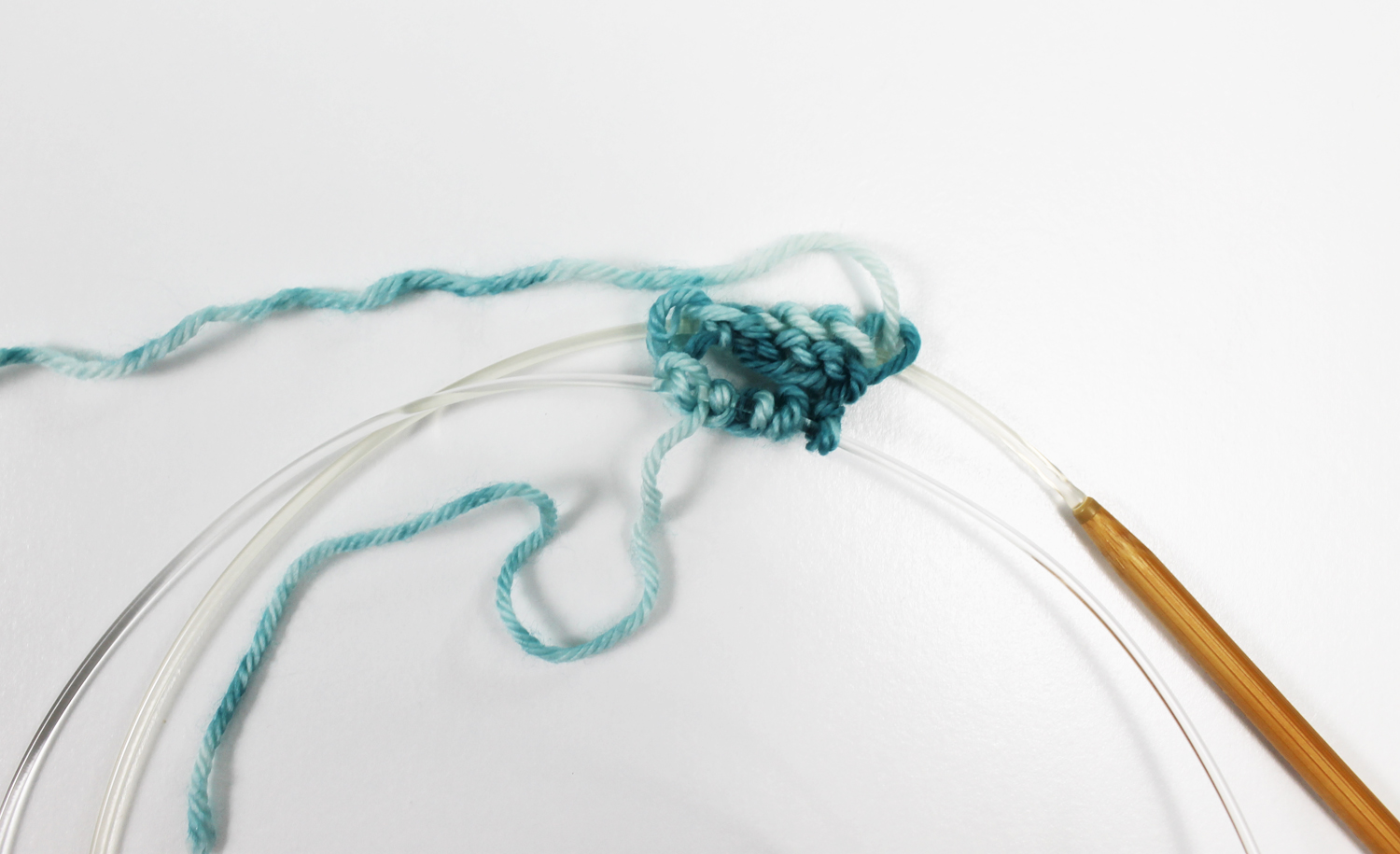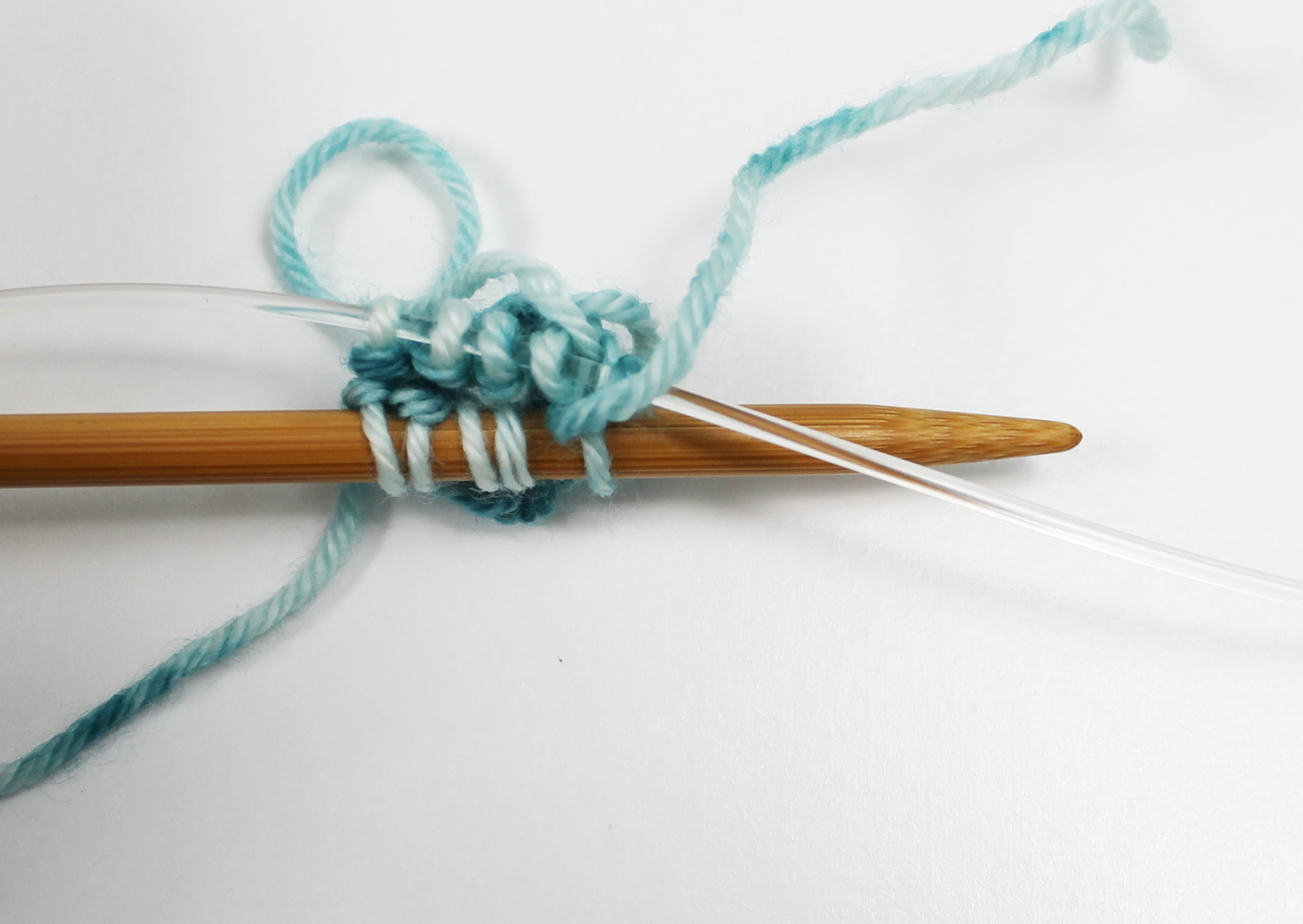If you hate fiddling with DPNs and can’t get the hang of magic loop, you’re not out of luck! There’s one other way to knit in the round: using two circular needles.

This technique is a cousin to magic loop. It’s pretty similar to magic loop except that you use two circular needles instead of just one long one.
When to use two circular needles to knit in the round
This technique can be used on any in-the-round project. It’s especially great as a substitute for magic loop when you’re working with a large amount of stitches that you can’t quite fit on half of a long circular needle.
Some knitters don’t like magic loop or double-pointed needles because those techniques cause ladders. Ladders are less likely in this technique since you’re working with two separate needles. You aren’t fighting with a long cable — that’s the cord that connects the needle tips — to stop it from separating stitches, and you don’t have one cable that keeps kinking and pulling the stitches apart.
What you need
The only inconvenience for this method is that you need two long circular needles that are the same size.
If you have the same size in two different long lengths, that will work just fine! I just don’t recommend using a smaller circular needle (16″ or less) unless you’re working with a very small amount of cast-on stitches. You’ll see why in the tutorial below!
How to knit in the round with two circular needles
This technique works a lot like magic loop except that you get more cable length to work with. Instead of one long cable being folded in half, you have the entire cable to use on one side.
While I wouldn’t normally use a bamboo needle and an aluminum needle at the same time (they might result in different gauges, making my circular knitting unbalanced), I’m using them for this demo so it’s clear which needle I’m referring to.
Step 1: Cast on

Cast the number of stitches you need onto the first needle, which is my bamboo needle. Here, I cast on 10 stitches.
Step 2: Transfer half the stitches

Grab the second needle, which is my blue aluminum needle. Slide half of the stitches onto that needle. In my case, that would be five stitches.
Note that this is the only time in the circular needle that the bamboo needle and blue needle will ever work together. You’ll see why later!
Step 3: Slide the stitches

Slide the stitches onto the cables of their respective needles. Then arrange the two needle cables so they’re parallel to each other and the stitches are facing each other.
Arrange your needles so that the needle with the working yarn (your second needle, the aluminum for me) is in the back. So above, my bamboo needle is closest to me, and the blue needle is in the back where the working yarn is.
Step 4: Prepare your stitches

You’ll start by working your first cast-on stitch — for me, that was on the bamboo needle. Grab the end of the needle and slide it over to the first cast-on stitch (and all the other stitches on the cable).
Step 6: Knit!

Using the other end of the bamboo needle, knit across all the way across (or follow your pattern) to the last stitch on that needle.
When you knit that first stitch, make sure the last stitch on the blue needle and the first stitch on the bamboo needle are close together. That will prevent a ladder from forming.
This step is also where things can get tricky if your circular needle isn’t very long. Your cable needs to be long enough so that you can pull that needle around to knit the stitches without much effort.
Step 7: Slide the worked stitches

To make sure the stitches you just worked stay in place, slide the bamboo needle so that the stitches rest on the center of the cable. That will keep everything in place while you work the other needle.
Step 8: Flip and prepare the other side
Flip your work around so that blue needle is in front now.

Slide the blue needle so it’s ready to work the next stitch. Notice your working yarn is still in the back, which is where it should always be when you start a new needle.
Step 9: Knit across

Using the other end of the blue needle, knit across to the last stitch (or follow your pattern).
Step 10: Switch again and work the other side

Slide the blue needle’s stitches to the center of the cable to secure the stitches.
Start all over again with Step 4, alternating the bamboo needle and the blue needle until your work reaches the desired length.
Notice that as you knit, you’re always knitting the stitches of that needle with the ends of the needle they’re hanging out on. Do not use the bamboo needle, for example, to knit stitches from the blue needle. If you do that, you will have to go back and unknit those stitches, and that’s no fun!
What’s your favorite method for knitting in the round?
Do you like methods like this, or do you prefer double-pointed needles instead?

Share tips, start a discussion or ask one of our experts or other students a question.
No Responses to “This Knitting-in-the-Round Method Doesn't Use DPNs or Magic Loop”